Biang Biang noodles, from Shaanxi province in central China, are famous for their impressive size: wide and long like belts, hence the nickname “belt noodles”.
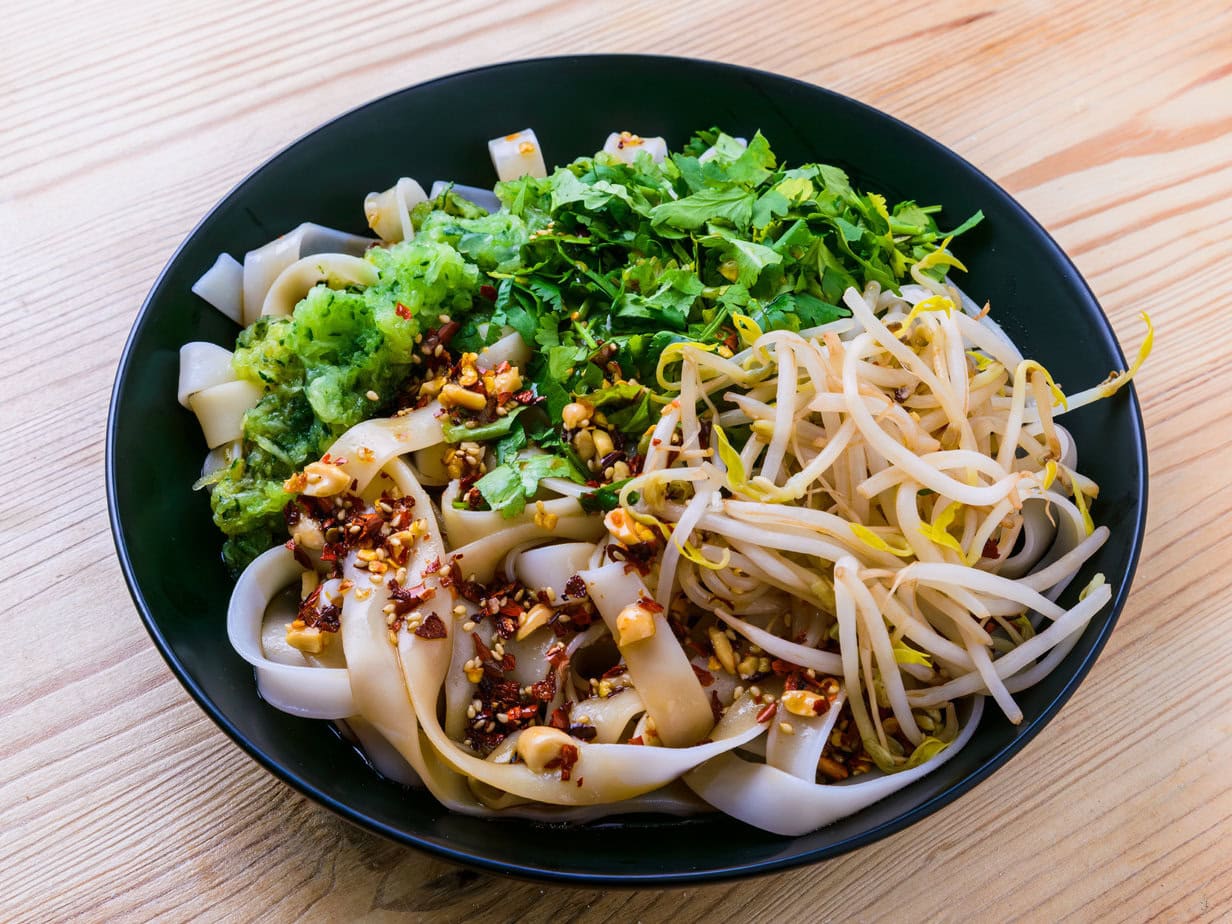
Biang Biang noodles are a point of pride in Shaanxi, which is also home to the Terracotta Warriors and the birthplace of China’s first emperor.
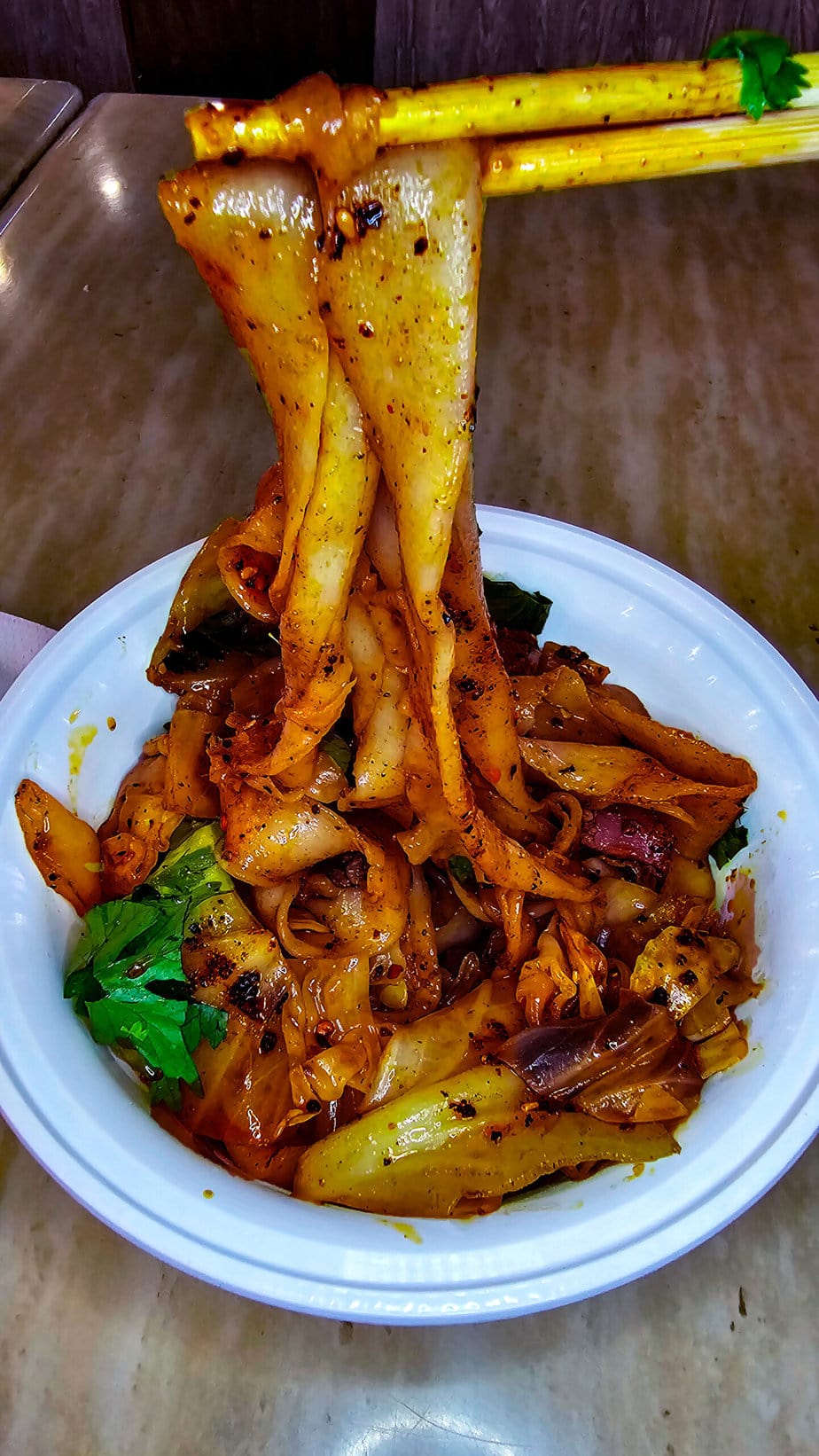
I first discovered this delicious dish in Queens, New York, at Xi’an Famous Foods. Their cumin version is simply DIVINE. In France, it’s just starting to catch on; you can find a semi-authentic version at the Taverne de Zhao in Paris that’s not bad at all.
A noodle dish whose name is used to discipline students
Funny enough, the character “biang” used in its name is notorious for being one of the most complex in the Chinese language. Although a version with up to 68 strokes exists, the 58-stroke form is the most widely recognized.
The character’s complexity is such that it is even used as a form of punishment in some schools in Sichuan province, where late students are sometimes made to write it out several times.

However, the word “biang” has no clearly defined meaning in standard Mandarin. The noodles’ name is thought to be onomatopoeic—the sound the dough makes when it’s vigorously slapped against the work surface during preparation.
The main ingredients of Biang Biang noodles
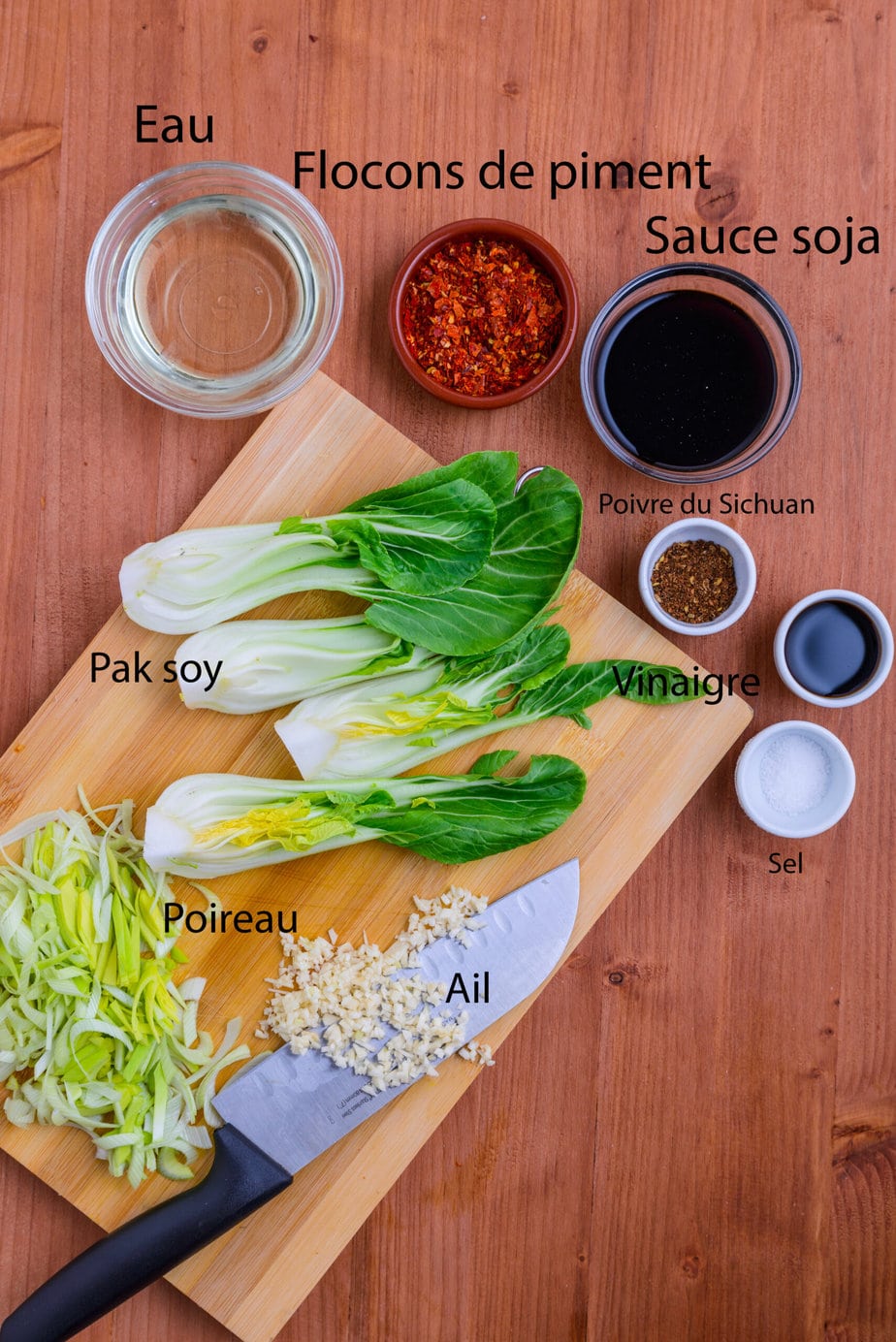
Chili flakes: Add a lively, spicy kick to the dish. In the chili oil topping, they lend distinct character and a heat that wakes up the palate, adding depth and complexity. You can use Korean gochugaru.
Sichuan pepper: This unique pepper adds an aromatic, slightly citrusy note with a pleasantly numbing tingle on the tongue—the famous málà. It creates an intriguing taste experience that balances the intensity of the chili flakes.
Black rice vinegar: Brings subtle acidity and depth of flavor. Unlike sharper vinegars, black rice vinegar has an underlying sweetness that complements the other spicy and savory ingredients while adding a rich color to the dish.
Light soy sauce: Acts as the savory base for the chili oil topping. Light soy sauce is less intense and saltier than dark soy sauce, allowing the other ingredients to shine without overpowering them.
Wheat flour: Choose flour with a protein content around 11%. To find it, just check the nutrition label. Italian pizza flours are generally great for this.
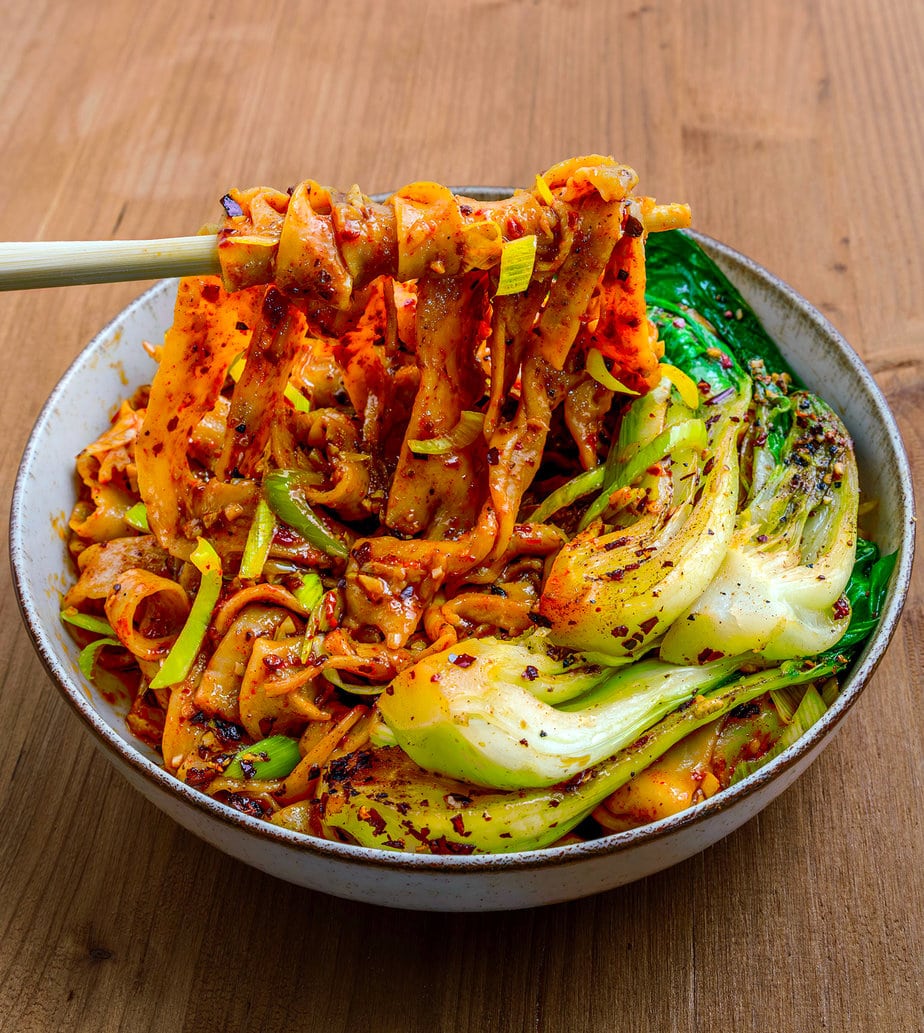
Equipment
- 1 Wok
Ingredients
- 200 g pizza flour or flour with a protein content as close to 11% as possible
- 0.5 teaspoon salt
- 100 ml water
- 3 tablespoons neutral oil
Chili Oil Topping
- 7 cm leek very thinly sliced
- 2 large garlic cloves minced
- 4 teaspoons chili flakes
- 0.5 teaspoon Sichuan pepper ground
- 4 tablespoons light soy sauce
- 1 tablespoon black rice vinegar
- 0.25 teaspoon salt
- 5 tablespoons neutral vegetable oil
Garnish
- 1 bok choy quartered, optional
- finely sliced scallions, for garnish
Instructions
- In a bowl, combine the flour and salt. Slowly pour in the water, mixing with your hands as you go. Aim for the dry spots as you add the water.200 g pizza flour, 0.5 teaspoon salt, 100 ml water
- Knead the dough for five minutes.
- You’ll probably notice one side is rougher and uneven. Pinch and gather that side. Slide the dough across the work surface so friction smooths out the pinches. Give it about twelve presses, working in a few different directions.
- Place the dough in a bowl and coat it with about 3 tablespoons of oil. Be generous. Let it rest, covered, for 5 to 10 hours.3 tablespoons neutral oil
- After resting, bring a pot of water to a boil. As each noodle is formed, drop it straight into the pot.
- Roll the dough into an even, flat oval—’pizza’ style. You’ll need a fairly large work surface.
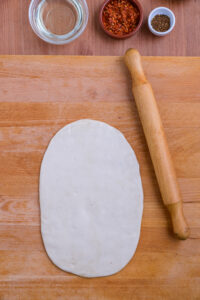
- Cut the dough into slices about 6 cm wide; optionally cut each slice in half.
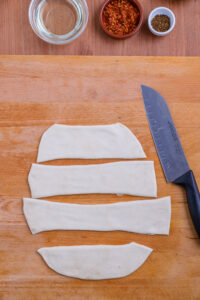
- Lightly flatten a slice with a rolling pin if needed. Press a groove down the center with a chopstick.
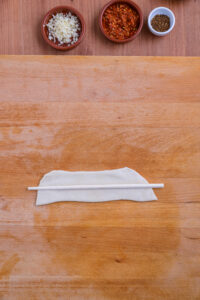
- Hold the noodle in your palm, pressing lightly with your thumb. Smack the noodle against your work surface about ten times to stretch it. Don’t press too hard with your thumb, or the noodle may tear.
- At the center of the noodle, push through the groove you made with the chopstick and stretch the noodle even longer. Break one end to separate it.

- Boil each noodle for about 1 minute, until it floats. Shape the remaining noodles while each one cooks.
Chili oil topping
- Blanch the bok choy with the noodles for 45 seconds.1 bok choy
- Transfer the noodles to a bowl; add the vegetables and the dry toppings.7 cm leek, 2 large garlic cloves, 4 teaspoons chili flakes, 0.5 teaspoon Sichuan pepper, 0.25 teaspoon salt, finely sliced scallions, for garnish
- Pour the soy sauce and vinegar over the noodles.4 tablespoons light soy sauce, 1 tablespoon black rice vinegar
- Heat the oil to about 215°C, then pour it over the noodles, aiming for the chili flakes and garlic.5 tablespoons neutral vegetable oil
Notes
Nutrition
Recipe source
Technically, the original method is quite complex and time-consuming, making it impractical at home. During my research, I found an excellent article by Chinese Cooking Demystified that I drew on for this post. Their technique lets the dough rest for a long stretch instead of alternating multiple short rests with kneading—it shifts the recipe from active to mostly hands-off.

